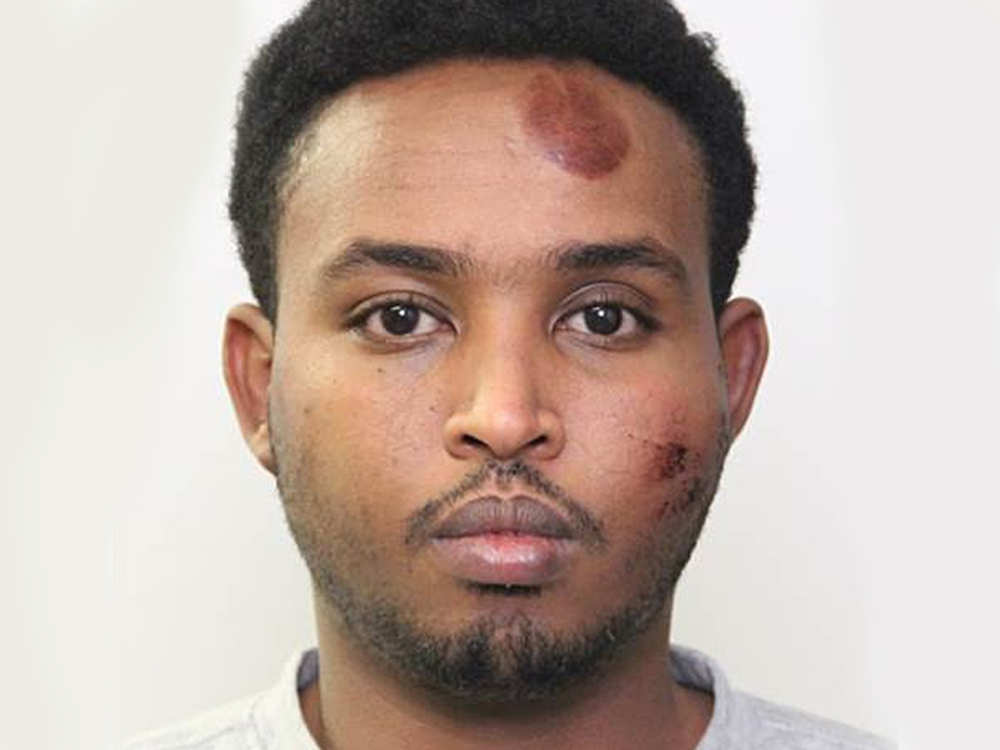OTTAWA — A Somali man suspected of carrying out what was called a terrorist attack in Alberta last weekend came to Canada and was declared a refugee after being ordered expelled from the United States several years ago, officials said on Wednesday.
The man, Abdulahi Sharif, 30, is accused of striking a police officer with a car and stabbing him outside a football stadium in Edmonton, Alberta, on Sunday and later using a rental truck to hit four people elsewhere in the city. He faces five counts of attempted murder, five counts of dangerous operation of a motor vehicle, one count of criminal flight causing bodily harm and one count of possession of a weapon.
The Royal Canadian Mounted Police have said that Mr. Sharif showed signs of extremism two years ago, leading to an investigation, although no charges were brought against him.
The United States Immigration and Customs Enforcement service said that it detained Mr. Sharif in July 2011 in California after he was found near the Mexican border without documentation, and that a judge in September of that year ordered him returned to Somalia. He was released from a detention center two months later, however, “due to a lack of likelihood of his removal in the reasonably foreseeable future,” the agency said.
Officials at the agency, citing privacy rules, declined to say why Mr. Sharif had been ordered out of the country, but confirmed that he was not the subject of criminal charges or a criminal investigation.
When American officials went to find Mr. Sharif in late January 2012 after he failed to check in with the immigration authorities, he had vanished.
Scott Bardsley, a spokesman for Ralph Goodale, Canada’s public safety minister, said that Mr. Sharif had applied for asylum as a refugee at a Canadian border crossing in 2012 and was granted the status that year.
Normally, people making refugee claims after entering Canada from the United States are turned back under an agreement between the two countries.
But a provision in the agreement allows people to make refugee claims if they enter Canada outside an authorized point. That led to a steady flow of refugee claimants crossing illegally from New York State to Quebec at an abandoned road this summer, although that traffic dropped off significantly last month.
Mr. Bardsley confirmed that Mr. Sharif was granted an exception under the agreement to make his claim, but said he could not elaborate.
He said that a removal order in the United States did not necessarily prohibit people from entering Canada, and added of Mr. Sharif that “there was no information that would have raised any red flags when he entered Canada.”
Prime Minister Justin Trudeau, who has expanded Canada’s efforts to allow the entry of refugees since taking office, said the government would review its procedures.
“We’re looking into the whole system and will reflect on whether we need to do things differently, certainly in the future, than the way they were done in 2012,” he told reporters in Ottawa. “But the priority is always making sure that we’re defending the values and rights of Canadians while keeping our communities safe.”
The country’s immigration minister, Ahmed Hussen, told reporters in Brampton, Ontario, that the decision to give Mr. Sharif refugee status had been made by the Immigration and Refugee Board of Canada, a quasi-judicial body that operates at arm’s length from the government.
(The New York Times)
